|
Here are just a few of this week's stories from the Michigan Department of Natural Resources:
See other news releases, Showcasing the DNR stories, photos and other resources at Michigan.gov/DNRPressRoom.
PHOTO FOLDER: Larger, higher-res versions of some of the images used below, and others, are available in this folder.
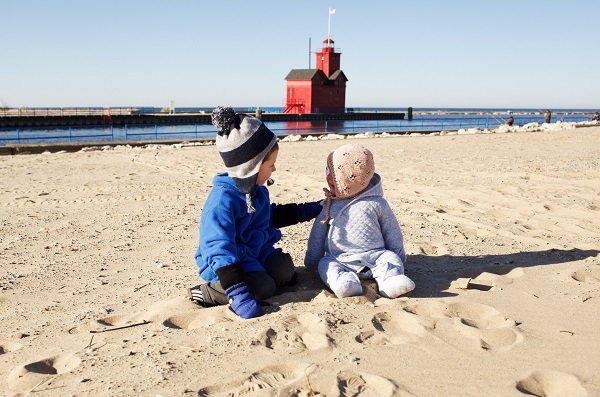 Want to see more pictures like this, taken by Michigan state parks photo ambassador Danielle Grandholm at Holland State Park in Ottawa County? Visit Instagram.com/MiStateParks to explore photos and learn more about the photo ambassadors! For more on the photo ambassador program, call Stephanie Yancer at 989-274-6182.
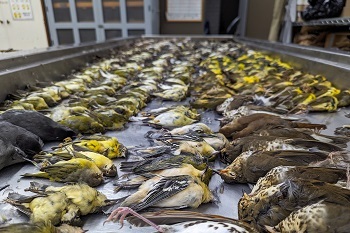
Earlier this month, nearly a thousand migratory songbirds on their way to Central America for the winter died in window collisions with a single building in Chicago. Species included many long-distance warblers that also travel through Michigan, including hundreds of palm warblers and yellow-rumped warblers.
The tragic loss of this many birds is a conservation concern for birds already facing significant population declines from habitat loss and climate change. North America is home to nearly 3 billion fewer breeding birds today compared to 1970. Additionally, two-thirds of North American bird species are at risk of extinction due to climate change. Many of the affected species were neotropical migrants, which are long-distance migrants that breed in North America and overwinter in Central and South America. These birds already face a complex range of threats such as development pressures and invasive species.
While collision events as large as this are rare, bird collisions are not. They are a leading cause of bird mortality, with up to a billion such deaths yearly in the U.S. alone. Michigan lies at the intersection of the Mississippi and Atlantic flyways, migration routes that bring over 350 bird species through the state each year, with fall migration peaking in October.
There is good news: With artificial light at night and reflective surfaces as the main causes of bird deaths, bird collisions are preventable. A 2021 study published in the Proceedings of the National Academy of Sciences of the United States of America discovered that by turning off half the lights in Chicago during bird migration, 60 percent fewer birds would die.
|
How to help
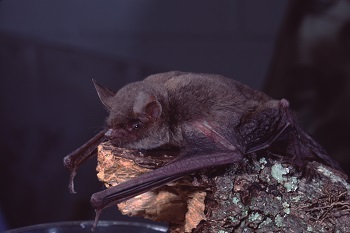
Without question, bats are one of nature’s most fascinating and misunderstood creatures. Despite their small size, they are also one of the longest-lived mammals in our region, with some recorded as old as 31 years!
Michigan is home to nine species of bats, all of which are insectivores. Their membranous wings, unique to bats, have a completely different structure than that of birds or insects. Although we rarely see them, bats are hard at work all around the world each night – eating insects, pollinating flowers and spreading seeds that grow new plants and trees.
These little creatures, so vital to healthy habitats, deserve some recognition! Join us and our conservation partners during Bat Week, Oct. 24-31, to celebrate all the good that bats do and discover ways we can give them a boost. Follow along with activities and events at BatWeek.org.
|
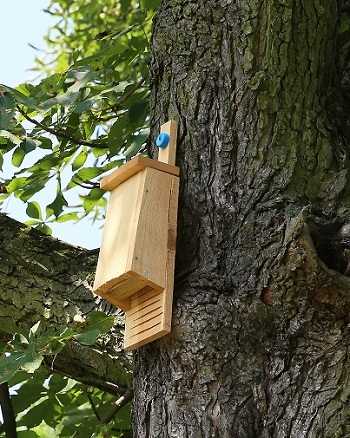
During Bat Week (and all year long) you can:
- Leave your leaves to help local insects over winter – curious why? Read this Showcasing the DNR story!
- Plant a bat-friendly garden with native Michigan species to reduce use of insecticides.
- Remove invasive species that threaten native plant populations.
- Install a bat house in a location not frequented by people.
- Help reduce the spread of white-nose syndrome by not entering closed mines and following decontamination guidelines for shoes, clothes and gear.
Bats are important members of Michigan's ecosystems, but, unfortunately, many species are in decline from serious threats like white-nose syndrome. It's a deadly disease that affects North American bats primarily during their winter hibernation. Infected bats wake up early from hibernation, rapidly deplete their fat reserves and are unable to survive the winter.
Bats with this syndrome often exhibit unusual behavior, like flying during daylight hours or gathering outside of caves in cold weather. Awareness is key to monitoring and better understanding diseases such as WNS. Please report suspect bats or other observed sick or dead wildlife through the DNR's Eyes in the Field app.
Questions about bats? Contact the DNR Wildlife Division at DNR-Wildlife@Michigan.gov.
|

The DNR’s Keith Kintigh has been appointed to the board of directors of the Forest Stewardship Council® in the United States.
Kintigh, who works out of the DNR’s Traverse City office, is the conservation and certification specialist for the department’s Forest Resources Division. His duties include coordinating the state's sustainable forest certification program and rare species and special area management. A wildlife biologist by training, Kintigh has dedicated most of his 23-year career to working in Michigan state forests.
“I am honored to be collaborating with FSC-US staff and the board to advance the council’s mission here,” Kintigh said. He was appointed to a three-year term and may be eligible for a second term as well.
FSC is an international nonprofit organization founded in 1993 to support environmentally appropriate, socially beneficial and economically viable management of the world's forests. The council sets standards for responsible forest management. Forest operations that meet these standards are permitted to use the FSC label on their products in the marketplace, enabling consumers to choose and purchase products that come from forests managed according to FSC standards.
|
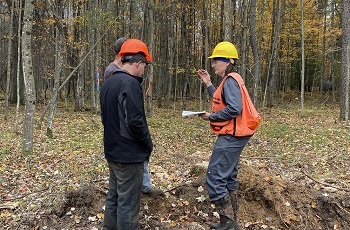
Michigan’s nearly 4 million acres of state forest have been certified under both FSC and the Sustainable Forestry Initiative® forest management standards since 2005; in fact, Michigan was the first U.S. state to receive either certification. Kintigh has been involved in the process of certifying Michigan’s forests since the start.
"While I've been involved with FSC-US for a number of years as a member representing the Michigan DNR, I look forward to becoming more engaged, providing a voice for FSC-certified public forest lands specifically, and the economic chamber more broadly,” Kintigh said.
Questions? Contact David Price at 616-443-1667. For more on the DNR's strategic management of state forests, visit Michigan.gov/Forestry.
|
|